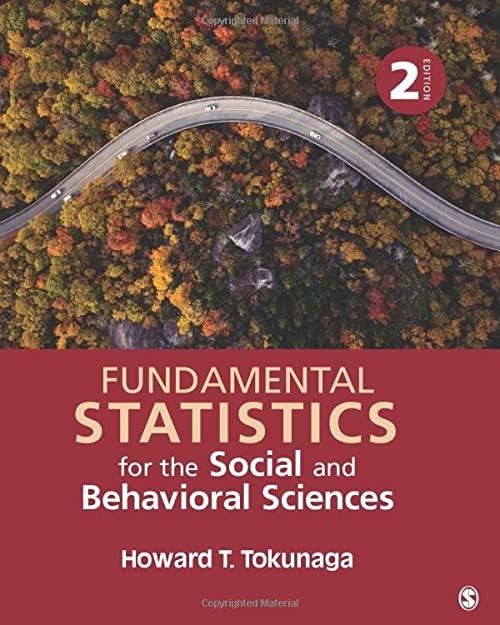To evaluate the effectiveness of four different teaching methods, algebra students are randomly assigned to one of
Question:
To evaluate the effectiveness of four different teaching methods, algebra students are randomly assigned to one of four methods (A, B, C, or D) and then given a test. The descriptive statistics for each of the four methods are provided below. Determine whether there are any differences in the test scores of the four methods.
Method A: \(N_{1}=20, \bar{X}_{1}=76.00, s_{1}=10.80\)
Method B: \(N_{2}=20, \bar{X}_{2}=75.00, s_{2}=9.50\)
Method C: \(N_{3}=20, \bar{X}_{3}=85.00, s_{3}=11.00\)
Method D: \(N_{4}=20, \bar{X}_{4}=87.00, s_{4}=10.80\)
a. State the null and alternative hypotheses \(\left(\mathrm{H}_{0}\right.\) and \(\left.\mathrm{H}_{1}\right)\).
b. Make a decision about the null hypothesis.
(1) Calculate the degrees of freedom \((d f)\).
(2) Set alpha ( \(\alpha\) ), identify the critical value, and state a decision rule.
(3) Calculate the \(F\)-ratio \((F)\) and create an ANOVA summary table.
(4) Make a decision whether to reject the null hypothesis.
(5) Determine the level of significance.
(6) Calculate a measure of effect size \(\left(R^{2}\right)\).
c. Draw a conclusion from the analysis.
Step by Step Answer:

Fundamental Statistics For The Social And Behavioral Sciences
ISBN: 9781506377476
2nd Edition
Authors: Howard T Tokunaga




